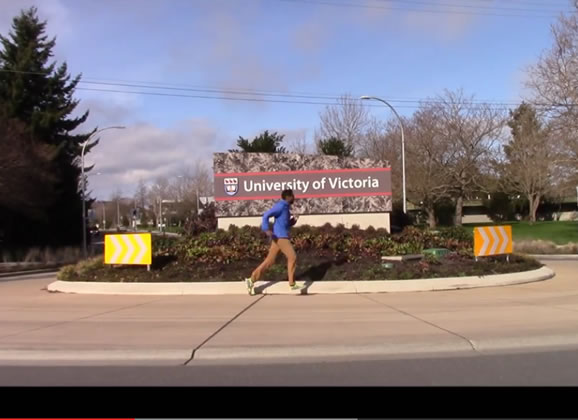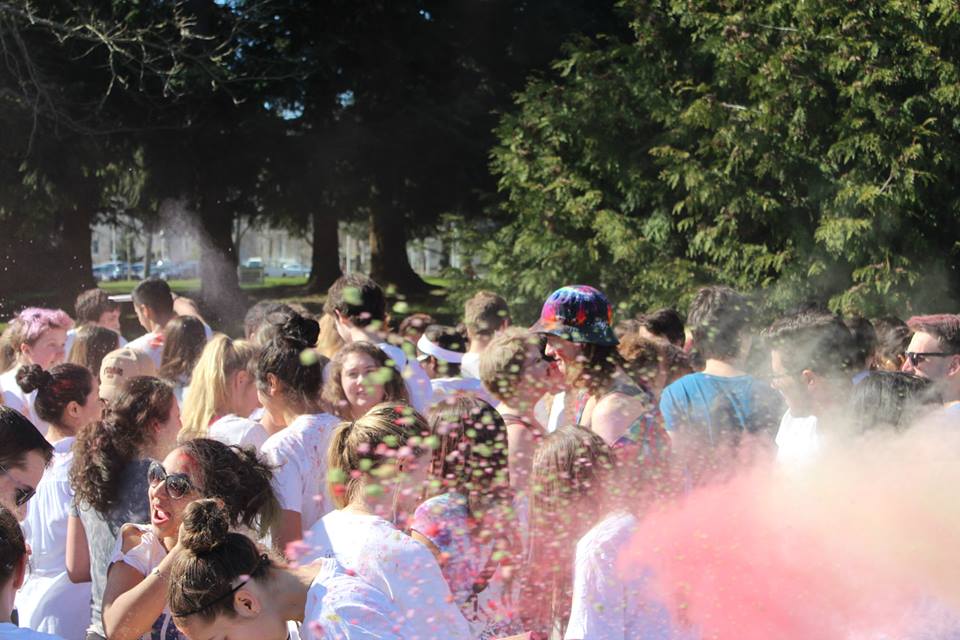Visiting Auschwitz: More Questions Than Answers
Guest post series: I-Witness Field School
 The I-Witness Holocaust field school (GMST 489) explores the ways in which the Holocaust is memorialized in Central Europe.
The I-Witness Holocaust field school (GMST 489) explores the ways in which the Holocaust is memorialized in Central Europe.
- Learn more about the course and instructor: Field school a chance for students to witness Holocaust legacy.
- Follow the field school on Twitter.
- Read the field school blog.
More Questions Than Answers
Guest post by Courtney Ayers
“Forever let this place be a cry of despair and a warning to humanity”
 When you think about the Holocaust, what is the first place that comes to mind? When I ask you this I do not mean what nation, but rather what location. Take a moment; what is your answer?
When you think about the Holocaust, what is the first place that comes to mind? When I ask you this I do not mean what nation, but rather what location. Take a moment; what is your answer?
For most, the place that will be in the forefront of their minds when thinking about the Holocaust will be Auschwitz, a place of absolute brutality and terror in which over an estimated 1.5 million people were slaughtered by the Nazi Regime.
Today, after growing up hearing stories about the atrocities committed in this place of near legend, I finally had the opportunity to visit two of the three camps which make up “Auschwitz:” Auschwitz Main Camp and Auschwitz-Birkenau, the section primarily used for the retention and extermination of Jews.
This extermination camp has become a symbol of the Holocaust over time, and due to this the reality of visiting this place is much different than one might expect. As you pull into the parking lot you immediately notice how busy it is.
Over 10,000 visitors come to Auschwitz every day, which means brushing shoulders with other visitors as you walk through the halls of the former barracks is not something one can avoid. The barracks, in contrast to the expectation of many visitors, are made of brick rather than wood since this location was the Polish military base before the invasion of Nazi Germany and the erection of electric barbed wire fences around and throughout the camp.
The close proximity brings with it an overwhelming concentration of human emotion; it becomes harder to breathe the moment you enter the camp. I suppose, to me at least, it felt as if there was an inescapable weight upon my chest through the entire experience.
As you go through security, the guide hands you headphones so that you can hear her during the tour. With so many guided tours and visitors, without them the noise would likely be close to what you find in a theme park.
The necessity to use headphones for a walking tour seems to be unique to Auschwitz, as the two concentration camps our group visited previously were essentially empty.
This brought up a question I’ve been pondering since this morning. Why are we so attracted to Auschwitz, and why do we expect this place to make us feel something more than any other camp or place of human suffering?
I think for myself the polarizing attraction to Auschwitz stems simply from exposure. Had we been told about Dachau, Treblinka, Sachsenhausen or Mauthausen to the extent we were told about Auschwitz throughout our lives, perhaps these camps, too, would have become such popular tourist destinations.
Or perhaps it’s because we, for some reason, crave an “authentic” experience and Auschwitz happens to be significantly more intact than most former concentration camps.
Visiting Auschwitz has brought up more questions than it has answers for me, but maybe this is the point. Perhaps to grow and continue trying to understand these events we must never feel as though all our questions are answered. Education is a lifelong journey, and we cannot ever stop questioning and learning both about and from the events of the Holocaust.
Never again.



